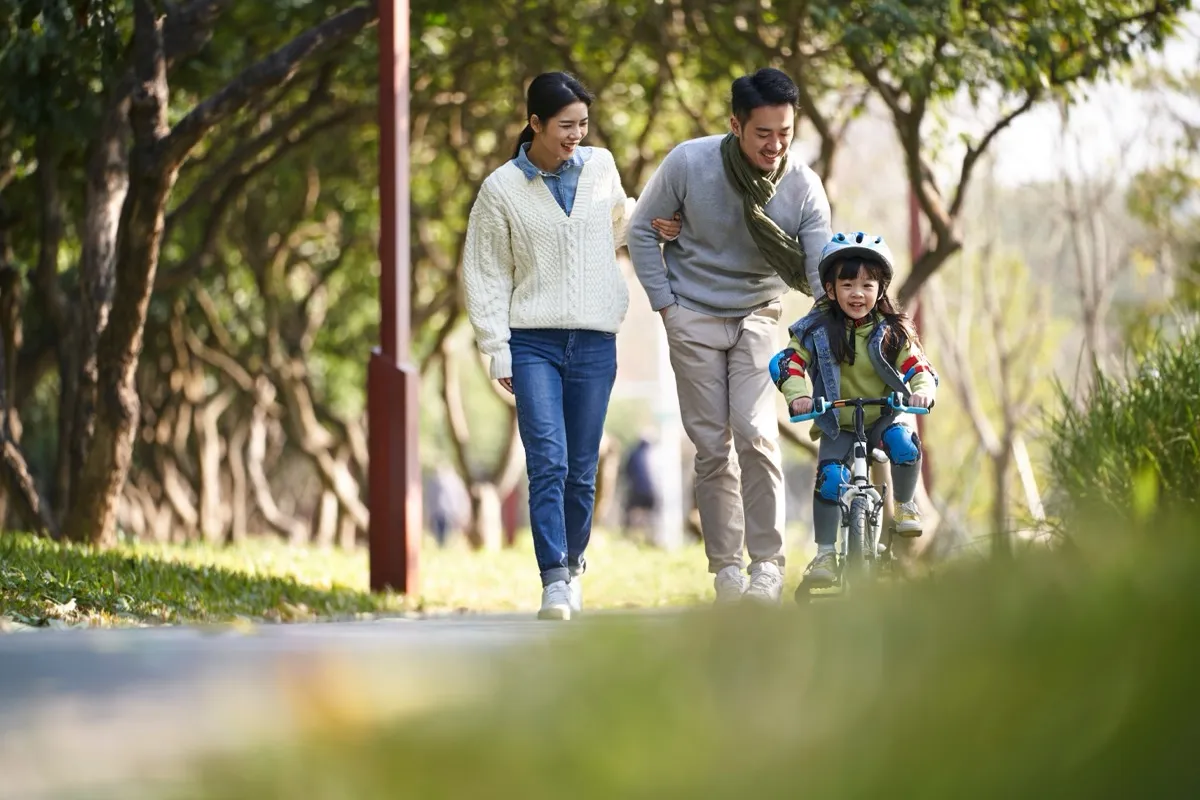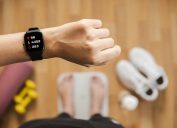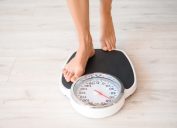4 Healthy Habits That Make Japan's Obesity Rate 90% Lower Than the U.S.
A popular YouTuber explains our cultural differences.

If you're struggling to maintain a healthy weight, you're not alone. America currently has an obesity rate of 43 percent—one of the highest among wealthy nations. The reasons for this are multifold and complex, but a few key themes emerge when you look at the trend: Insufficient access to affordable, fresh foods, hefty portion sizes, hidden sugar in just about everything, and low physical activity levels are all contributing to our expanding waistlines.
That's why, to improve the average American's health, many experts look to other countries for inspiration. Japan, for instance, has an obesity rate of just 4.5 percent, meaning its citizens suffer from much lower rates of cardiovascular disease, Type 2 diabetes, and certain types of cancer. In fact, according to a 2021 study in the European Journal of Clinical Nutrition, Japan has the longest average life expectancy among all G7 countries.
Yoko Ishii, a YouTuber, social media influencer, and activist, thinks she knows why. She recently shared four health habits that could contribute to Japan having an obesity rate 90 percent lower than America's.
RELATED: People Who Live to 100 Have These 3 Things in Common, New Research Shows.
1
Japanese children learn about nutrition and cooking in school.

In a recent video shared with Fox News, Ishii says that health education starts early in Japan, while children are still in elementary school. In particular, kids learn about nutrition in home economics classes and are even taught specific recipes that will set them up to have healthy eating habits later in life.
"We cook in class as well," Ishii explains in the video. "Just like how in science you do experiments, we actually do it and get a hang of it."
Additionally, all students from elementary school to junior high school receive a healthy daily lunch, typically consisting of rice, soup, a dish of fish and vegetables, and milk. Ishii says this sets an example of what an "ideal lunch" should look like, emphasizing good nutrition and healthy portion sizes.
2
Japanese children have built-in time for exercise.

Ishii says another important health habit in Japan is making built-in time for exercise. In school, students have physical education classes and often join martial arts clubs, including Kendo and Judo.
Getting to and from school also offers an opportunity for more exercise. While most American children are driven to school, walking to school is considered much more common in Japan. Ishii says that when the school is farther from home, it's not uncommon for children to ride bikes.
"While growing up, we establish the system in ourselves to exercise and to depend on ourselves," Ishii says.
RELATED: "Rucking" Is the New All-Ages Fitness Trend That Can Make You Look and Feel Younger.
3
Japan prizes health knowledge.

So many of our health habits are shaped by our cultural norms and expectations. In America, we contend with severely mixed messages: extreme pressure to meet fitness and beauty standards, pitted against heavy advertising to disregard moderation and eat ever-expanding portion sizes.
In Japan, Ishii says there's a more singular message when it comes to health. For instance, it's common for TV variety shows to quiz your fitness or nutrition knowledge and for people to discuss these topics socially.
"We have to know about it and if you don't, that's kind of an embarrassment," Ishii says. "We are very passionate to learn about it so we can keep up with other people."
4
Japanese families do chores themselves.

In Japanese schools, there are no janitors—students are tasked with cleaning their own classrooms and hallways. This emphasis on self-reliance continues through the adult years, Ishii says, and ultimately makes people more physically active.
"When we grow up in our society we don't have maids. Even if you are somewhat rich, you don't think about that—you do everything on your own and clean by yourself," she says.
Though most Americans don't have maids either, we're known to prize convenience and automation whenever possible—for instance, by ordering items online rather than walking to a store. This lends itself to getting less physical activity over time, ultimately hindering our broader health goals.
For more health news sent directly to your inbox, sign up for our daily newsletter.





















